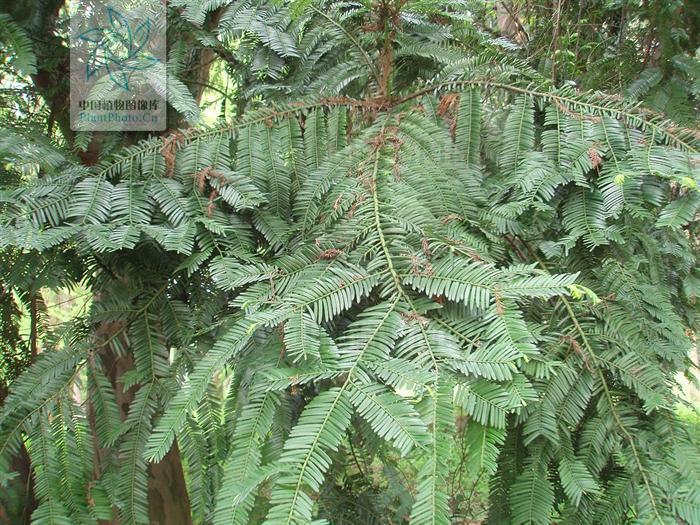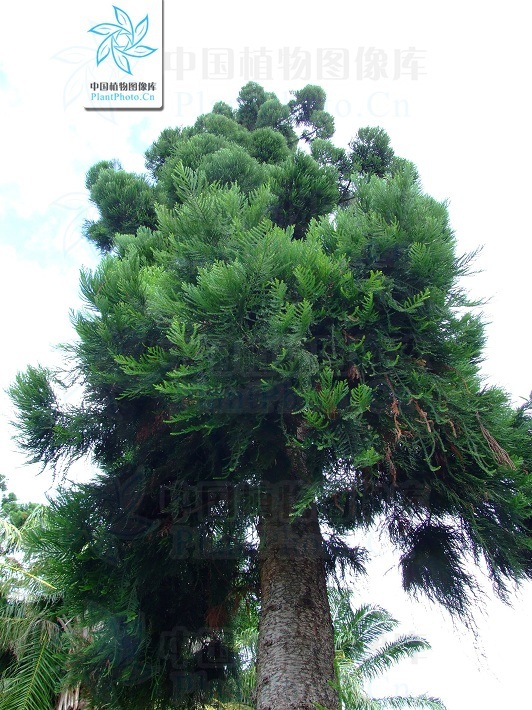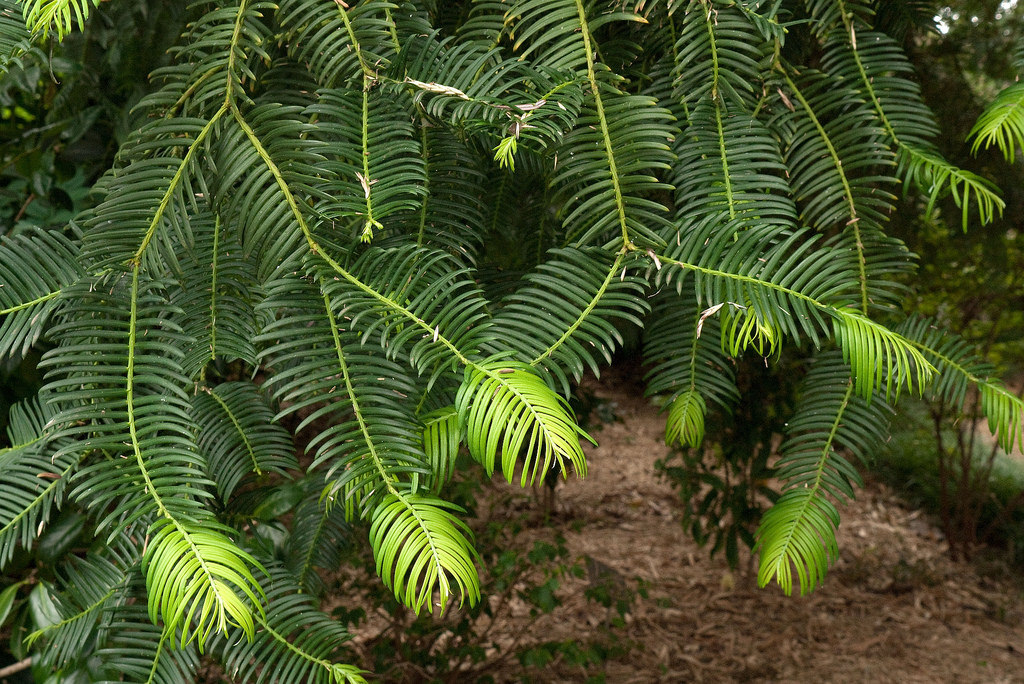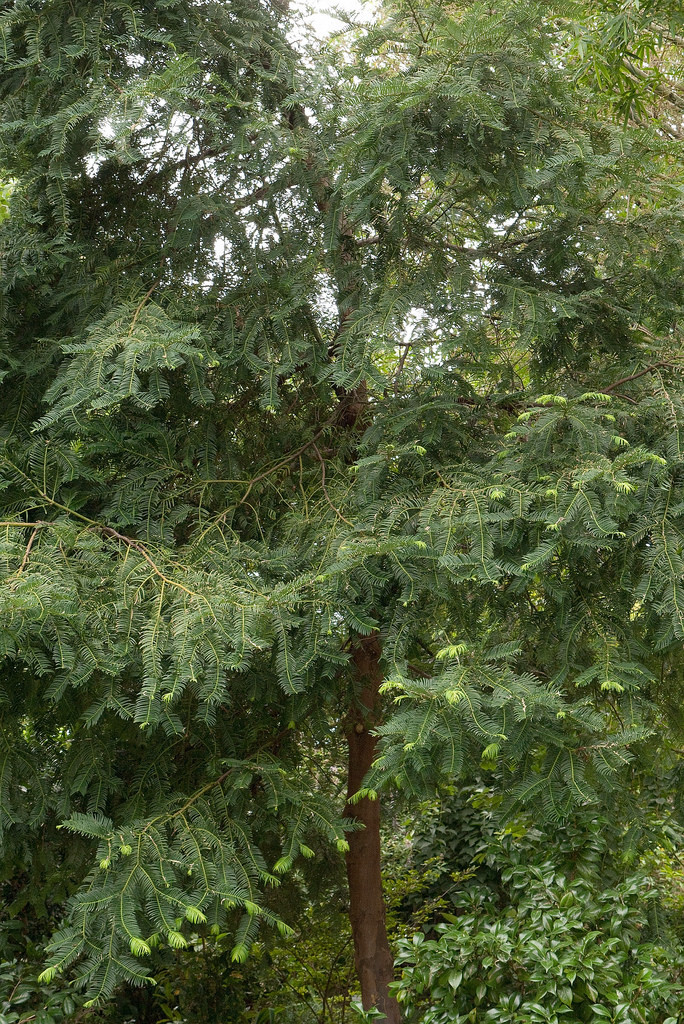Cephalotaxus hainanensis, as described in 1953 by Hui Lin Li in Lloydia, 16th edition, is commonly known as Hainan plum-yew. The species name recognizes this conifer as endemic to China's Hainan Island. C. hainanensis has anti-leukemia properties and is widely used in China. Exploitation of the bark and leaves as well as logging are a potential threat to this species that is widespread on Hainan.
Description. Hainan plum-yew is an evergreen coniferous species of tree that grows to mature heights of 33 to 60 feet (10 - 18 m) tall with a broad, oval crown. Many of the metric are virtually the same as C. mannii with the following exceptions:
- Leafy branchlets are somewhat shorter in C. hainanensis, measuring 3.2 to 4 inches (8 - 10 cm) long and 1.8 to 2.2 inches (4.5 - 5.5 cm) in outline compared with 4.4 to 7.6 inches (11 - 19 cm) long and 2.4 to 3.2 inches (6 - 8 cm) broad in C. mannii.
- Leaves are different, held at 70 to 80° angles to branchlet axis (45 - 70° in C. mannii), are are parallel sided throughout (not tapered). Stomatal bands are narrower in C. hainanensis, measuring 0.028 to 0.052 inch (0.7 - 1.3 mm) wide, as compared with 0.048 to 0.072 inch (1.2 - 1.6 mm) in C. mannii, and are 2.5 to 4 times as wide as midveins (6 to 8 times in C. mannii). Needle apices are abruptly and very shortly mucronate (not cuspidate).
Distribution. This species is native to China: Hainan Island, perhaps also Guangdong and Guangxi provinces, although those plants are here assigned to
C. mannii, in accordance with a study done in 1999 by Fu Liguo (Š‚…ç«‹Š›½), Li Nan (æŽæ¥ ), and Robert R. Mill in Sections on Cephalotaxaceae, Ginkgoaceae and Pinaceae.
Hardy to USDA Zone 9 - cold hardiness limit between 20° and 30°F (-6.6° and -1.1°C).



